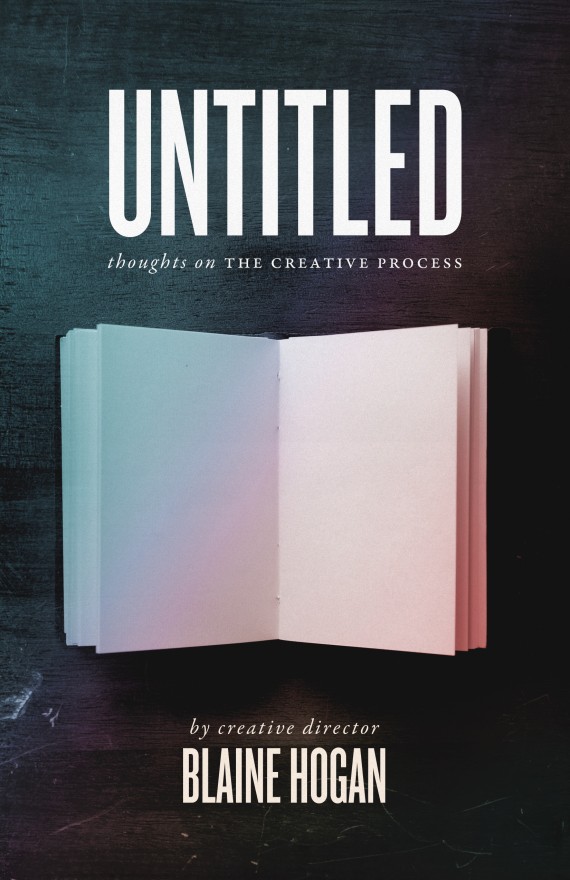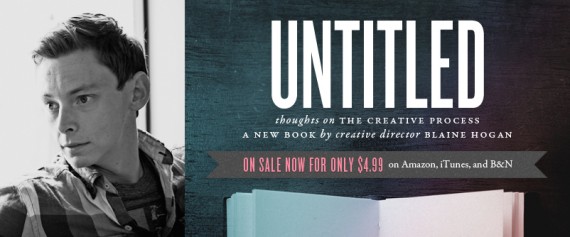If you’ve been online at all in the last month, you’ve probably heard the name Blaine Hogan.
That’s a good thing.
Because Blaine just released a book that you need to pick up. It’s one of the best books on creativity that I’ve ever read.
Blaine is the creative director at Willow Creek Community Church.
I had the privilege of asking him a few questions related to his book, creativity, the church, and worship.
David: When it comes to ministry in the church, I’ve noticed an unspoken tension between being creative and being pastoral. How do we know our creativity has gone too far? How can we balance this tension?
Blaine: I try to bridge this gap by thinking that the artist is a pastor. When we see our roles as only programmers and producers, we miss out on seeing how the artist’s role is also being a prophet and pastor as well. I’m working on a book on this concept, so I’ll let you know when I know more! 🙂
David: What are some ways that church “creatives” and “non-creatives” can work more effectively together?
Blaine: Mutual respect. When creatives and non-creatives aren’t getting along I think it’s usually because there is some underlying personal issues. The creatives don’t think the non-creatives are flexible enough and the non-creatives don’t want to put up with the flightiness of the creatives. The truth is both are needed. The only way I’ve seen these groups play nicely is when we understand and respect each other’s idiosyncrasies.
David: Worship in the church can often resort to rehearsal > Sunday > 3 fast songs > 2 slow songs. What are some ways that we worship leaders & songwriters can explore deeper creativity?
Blaine: I like to ask, “what does our community need and how I can uniquely offer that to them?” This is a great way to be specific to both your community and your unique story – two things that I believe are essential when needing to pull ourselves out of a formulaic Sunday.
David: What inspired you to write this book on the creative process?
 Blaine: It began by challenging myself to write down what my creative process actually was based on the 15 years of art-making I’ve done. From there it turned into a manifesto that I thought might be helpful to other’s.
Blaine: It began by challenging myself to write down what my creative process actually was based on the 15 years of art-making I’ve done. From there it turned into a manifesto that I thought might be helpful to other’s.
David: I love when you said, “‘Did it work?’ is not a question of art. That is a question for your washing machine.” Explain what you meant by that.
Blaine: Art is too often relegated to being a utility. The only way we can move beyond this is by asking better questions when we’re evaluating what we’ve made. Your heart isn’t a machine and neither is your art – which is where the best art comes from.
David: You also said, “Becoming a great artist is about sitting and paying attention to the world that is passing everyone else by.” How does this work for you in the context of busy church ministry? How can we apply this in the midst of our busy jobs?
Blaine: It is so hard. This might be the hardest thing to do, in fact. Being still is so difficult. The thing is…there are no tricks. You either do it or you don’t. You must carve out time to sit and breathe and think.
Question: How do you balance creativity with your busy schedule? You can leave a comment by clicking here.

This book is on my wish list!
For me, creativity doesn’t happen by accident. I have to be intentional about making time for it. I can read a million blogs about creativity, have long discussions with other creatives about it, even make lists about how I will create more. But if I don’t carve out TIME, it just doesn’t happen. So I get up earlier, stay up later, eat lunch in my car with a journal and some music. If I wait until I “have time” for creativity, it doesn’t happen.
Intentionality is key. Jenna, you should definitely pick up the book. It’s the best $4.99 you’ll spend this year. A worthy investment 🙂
Jenna,
You are so right! This is where the hard work really comes in, though it sounds like you have a nice routine. My wife is really big on writing in the car. I hope you’ll read the book and I hope you love it!
“You must carve out time to sit and breathe and think.”
This is something I haven’t ever really done until recently. I used to just create things when I could find the time. I’m realizing now that carving out time is breathing new life into my creativity, and like you’ve stated before on this blog, the more you create, the easier it becomes.
Great interview. Can’t wait to read the book!
Well said, Ryan!
“David: What are some ways that church “creatives” and “non-creatives” can work more effectively together?
Blaine: Mutual respect. When creatives and non-creatives aren’t getting along I think it’s usually because there is some underlying personal issues. The creatives don’t think the non-creatives are flexible enough and the non-creatives don’t want to put up with the flightiness of the creatives. The truth is both are needed. The only way I’ve seen these groups play nicely is when we understand and respect each other’s idiosyncrasies.”
I also think proper well thought out communication is key too. I was working at a church as the Creative Director and every once and a while the pastor and I would be on totally different pages, because we stopped working together and started working as individuals. We stopped talking to each other. We needed to get back on the same page. Ever once and a while we had to just stop and talk things out to get back on the same page with each other. When we would go a while without doing so, we would get really frustrated with each other.
Jeffrey, you speak the truth. I’ve found this to be true as well. Tension builds without good communication.
I loved your ebook! It’s the execution of ideas and putting in the hard work that matters most.